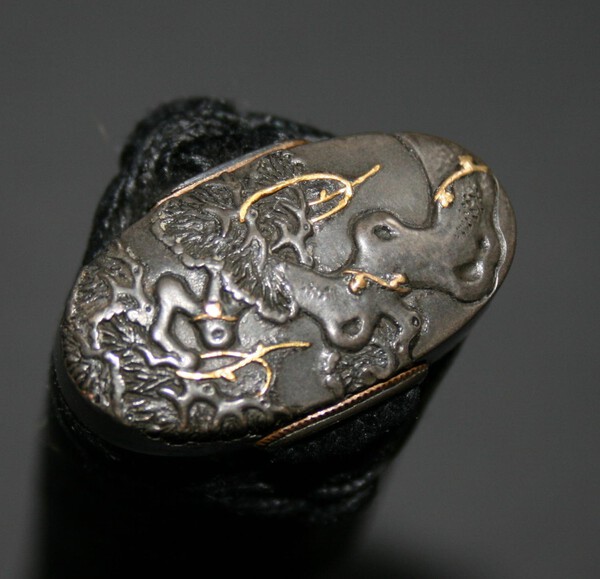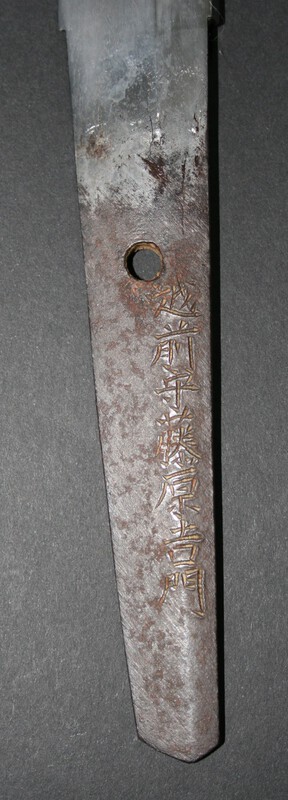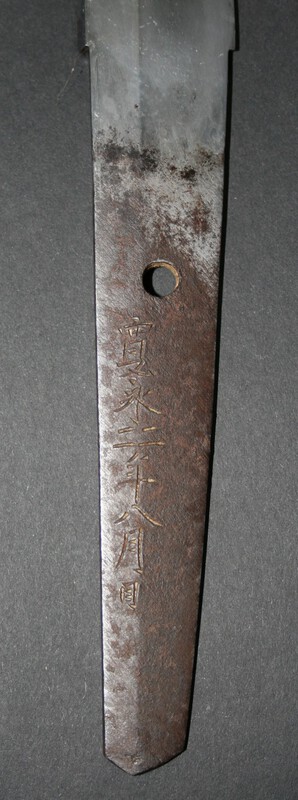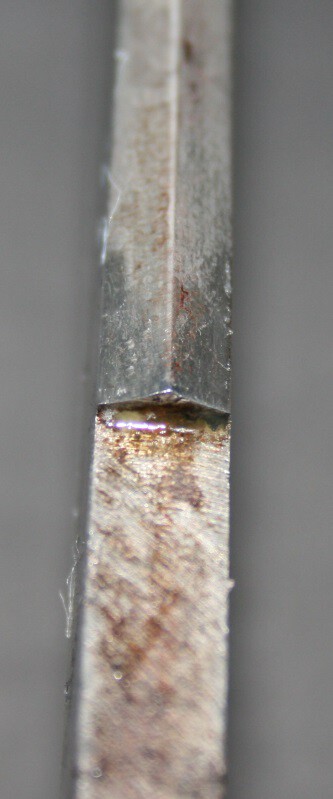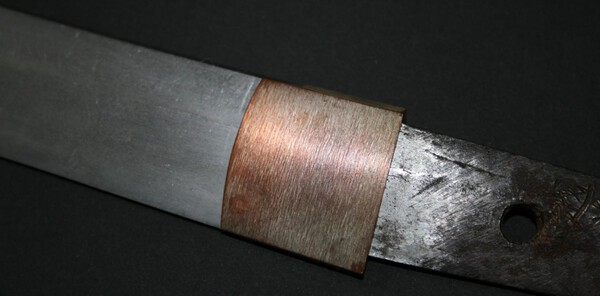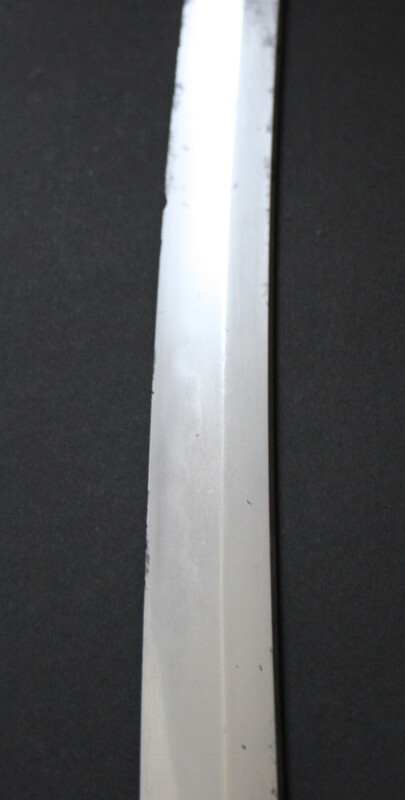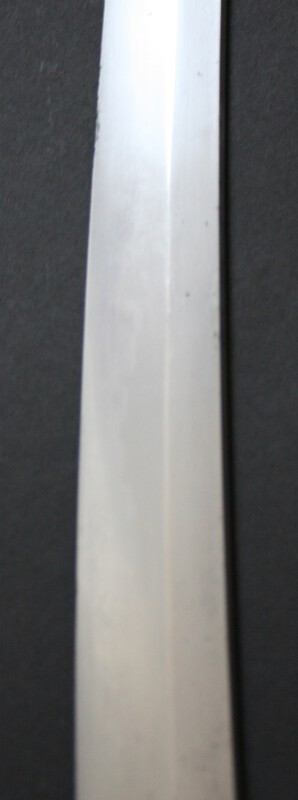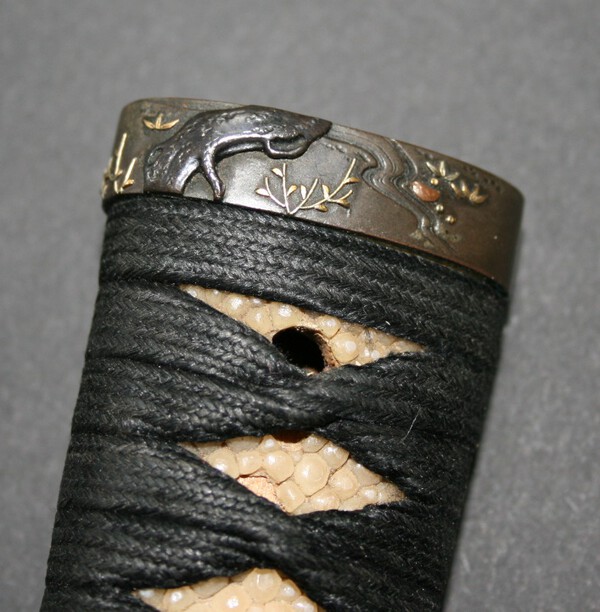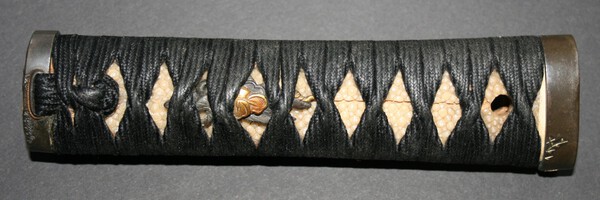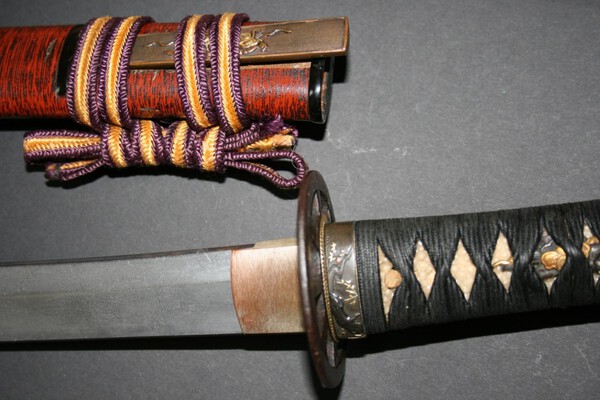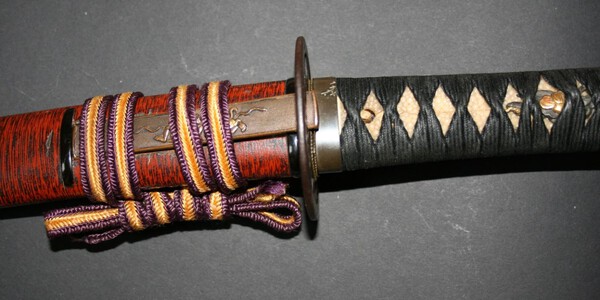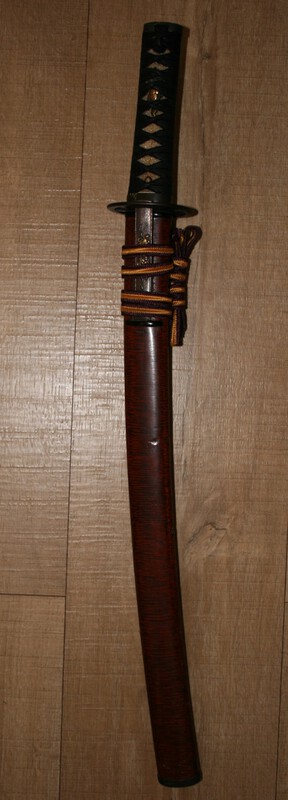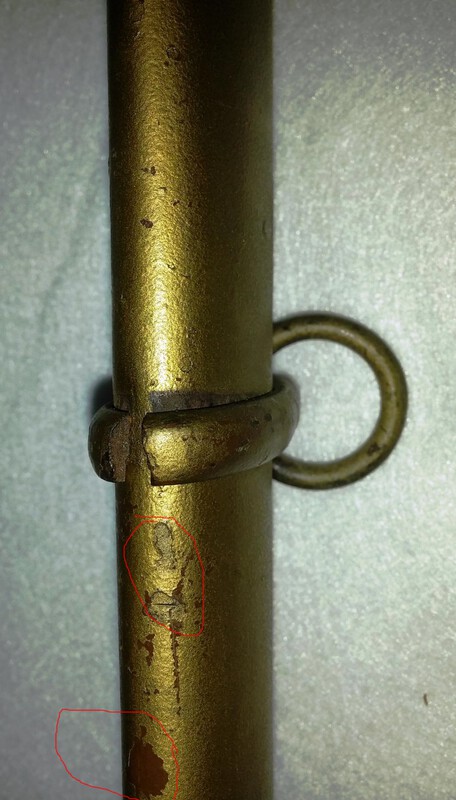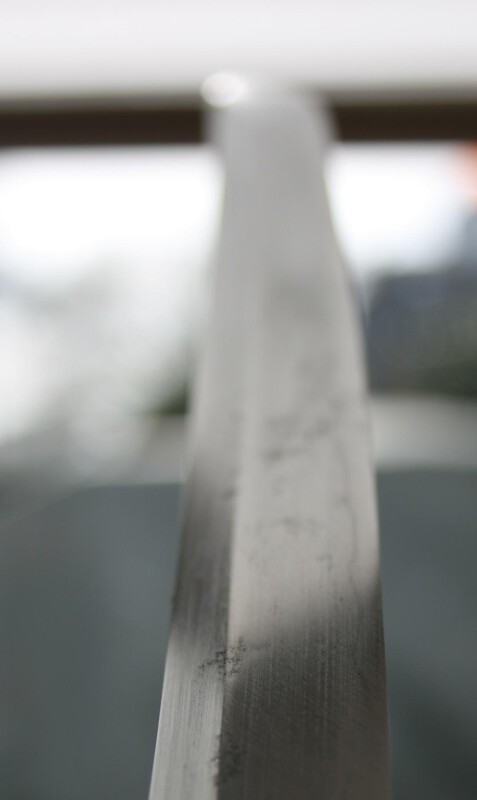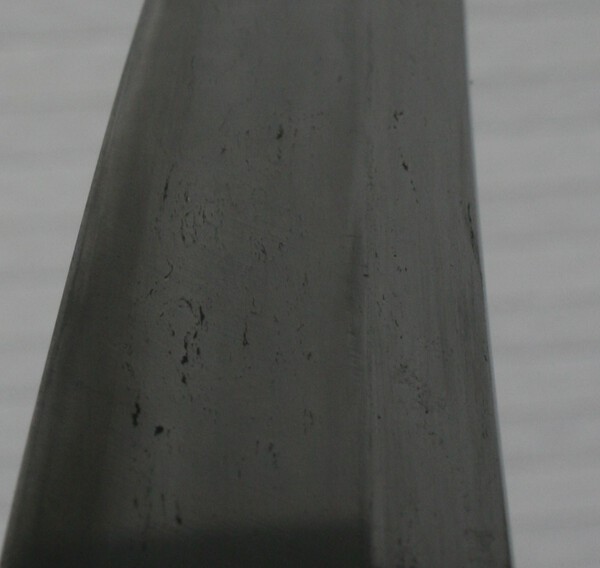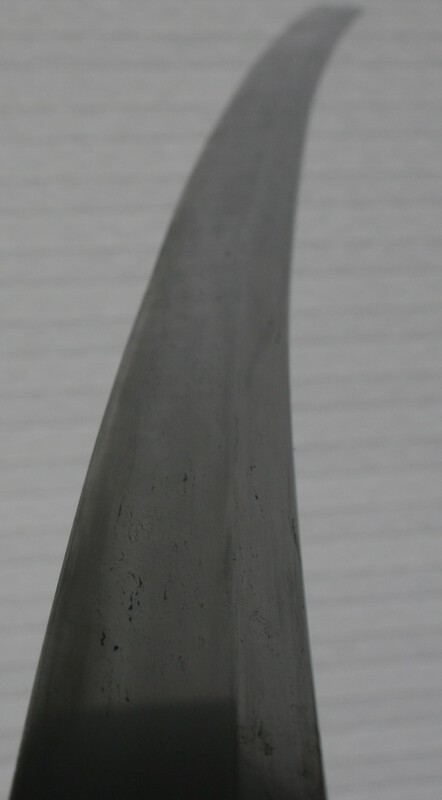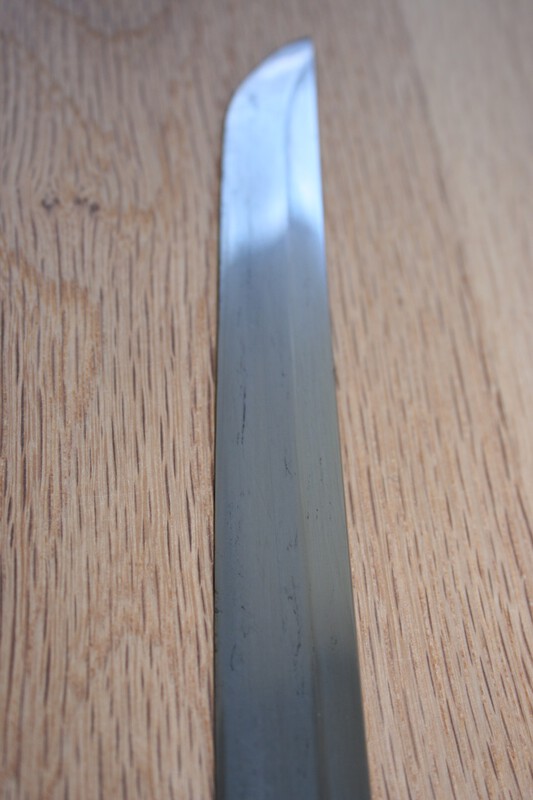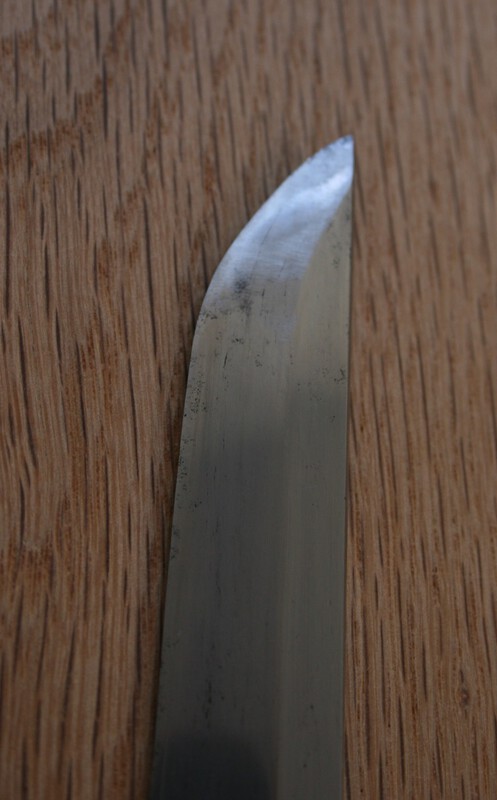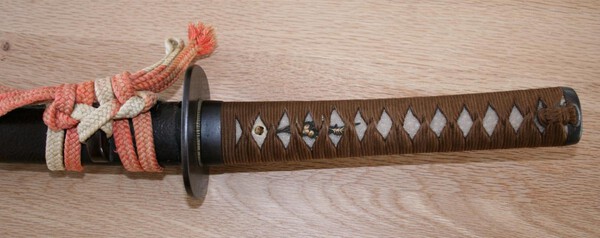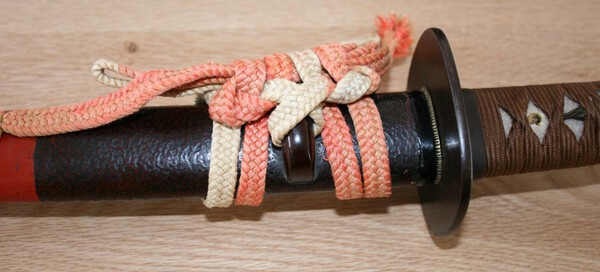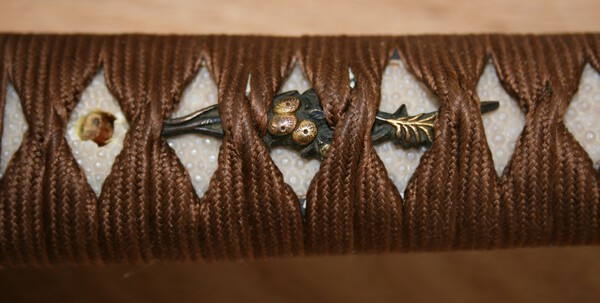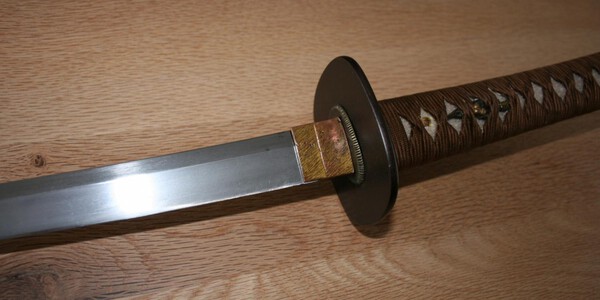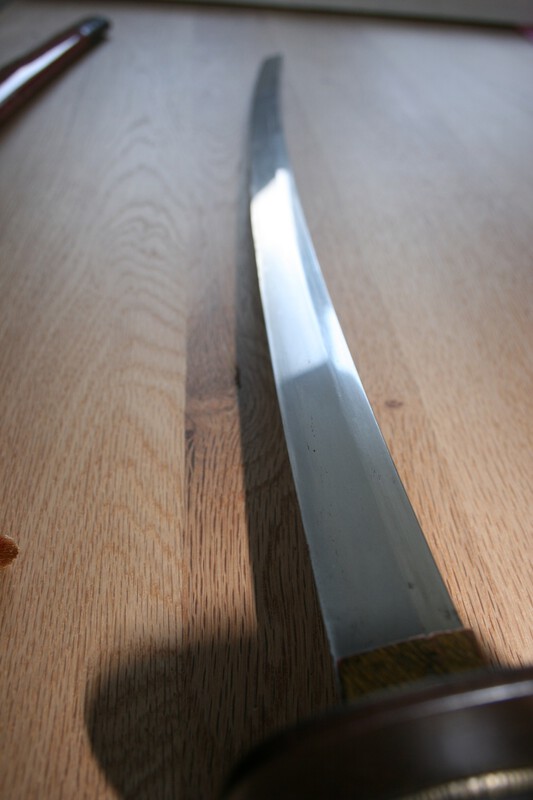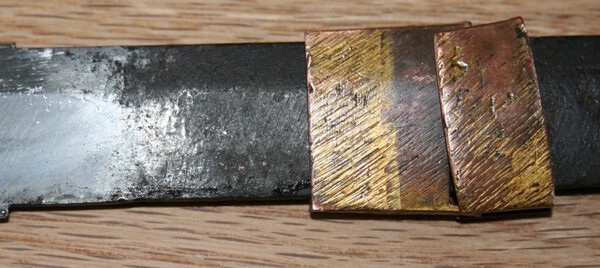-
Posts
750 -
Joined
-
Last visited
-
Days Won
2
Content Type
Profiles
Forums
Events
Store
Downloads
Gallery
Everything posted by EdWolf
-
-
-
Hi, I have bought a nice Wakizashi from the Edo period. It’s signed Echizen no kami fujiwara yoshikado. It took me almost two hours to figure this out but I managed it on my own I’m learning… The tang is also dated but I can only figure out the first to kanji characters. Kan ‘ei (1624-1644). Maybe one of you can tell me more about the date? The kanji characters on the kogatana are hard to read. I have taken a lot of pictures. Hope you enjoy it. With the camera, I’m using it’s very hard to catch the hamon. The hamon is visible. There is some blade damage at the tip. I think there is some moisture in the saya or the blade was not wel protected by some oil. Regards, Ed
-
Hi Stephen, Thank you very much! Regards, Ed
-
-
Hi, I need your help! Next week, I will visit an old guy who wants to sell his Japanese army sword. The blade is made in the traditional way. He claims that this sword is made by a very good smith. Strange enough he can give me the name (he doesn’t remember it). To prepare my visit I need the tang translation. I have tried it myself but this one is very hard. I can only read the last kanji of the signature. SAKU KORE. This is the only picture I have. I hope one of you can help me. Your help will be highly appreciated! Regards, Ed
-
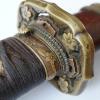
Any Tips For Period Re-Paint?
EdWolf replied to Bruce Pennington's topic in Military Swords of Japan
It looks like varnish. It was common practice by collectors to cover the blade with varnish during the 70's and 80's. I have seen a lot of bayonets, all covered with a coat of varnish. It protects the blade and luckly easy to remove. -

Any Tips For Period Re-Paint?
EdWolf replied to Bruce Pennington's topic in Military Swords of Japan
Hi Bruce, Your sword turns out great. Was the blade also painted with gold paint or covered with varnish? Regards, Ed -
That's too bad. Good luck scraping the paint.
-
Be sure that the nail polish remover is acetone based.
-
Use a cotton ball and gently rubbing the golden paint. It will take some time but the paint should come off.
-
To remove the old paint, you can use nail polish remover. The war time paint doesn’t react to this because it contains lead. The post war paint will come off. Please, start with a small area.
-
I agree with Bruce. The fact that the paint is added post war doesn’t prove anything else about this sword. I only mentioned the post war paint because Steve thought that the gold color paint was the primer coat. Ed
-
Hi Steve, I am collecting German helmets for almost 35 years. Detecting fake camouflage paint or post war applied paint is a skill I have developed in these years. The red circles I have painted in the picture is a sign that the gold paint it added at a later stage. Ed
-
Hi Steve, That’s an interesting sword. As a novice sword collector, I can’t give you more information about your sword. From the pictures, you provided it clearly shows a red/brown under the gold paint. The gold paint is not the primer coat. The gold paint on top of the small damage is also a sign that the gold paint is added at a later stage. Regards, Ed
-
Hi to all, Thanks for all the replies and given advice. The hamon is visible but you need a good light to see it. With my camera, it is almost impossible to catch. The curve and lines of the blade are nice. Although the finish is not the best I enjoy looking at this sword. Maybe not the best approach for a starter but I buy my sword for a low price. The risks are limited and even when I sell the individual parts it will almost cover the total costs. If I buy a sword for a high price there must be some paperwork with it BTW, like most of us I have read the novel Shogun by James Clavell. Loved it. Regards, Ed
-
Ray, I think you are right about the DIY cleaning job. I’m relatively new to Japanese sword collecting. I’m trying to read as much as possible and I’m enjoying this forum. I don’t know anybody in person in the collecting society so this forum is my only source for honest opinions. Thanks for that guys! All information (sword smith /time period) will be highly appreciated! This sword maybe needs a good polishing but for now I will enjoy it for what it is. Looking at the blade and trying to identify all the parts and learning the Japanese names is great fun. Are there good sword polishers in west-Europe?
-
-
Hello to all, I want to share with you my latest addition. The nakago is signed but hard to read. I think the first kanji is KAMI but I’m not capable of reading the other kanji characters. Maybe one of you can help me. Some specs of the blade: Nagasa 65 cm, Sori 2 cm, Nakago 17.5 cm, blade width near munemachi 2.8 cm, munemachi 2.4 cm, a niju-habaki. The saya has some little scratches but is still in a nice condition. The lower part of the saya is reinforced with copper. Feel free to comment. Regards, Ed
-
A crochet hook will do the job. You can also sharpen the tip so you can push the tip of the crochet hook deeper into the paper prop. Ed
-
Maybe the snug fit is caused by the fact that the slope of the outer part presses the inner part down. I’m not the best artist but I have tried to make a drawing Regards, Ed
-
Hi Mike, In the forum guidelines is a short description about how to upload pictures. It's easy. Beware of the filesize. Regards, Ed


